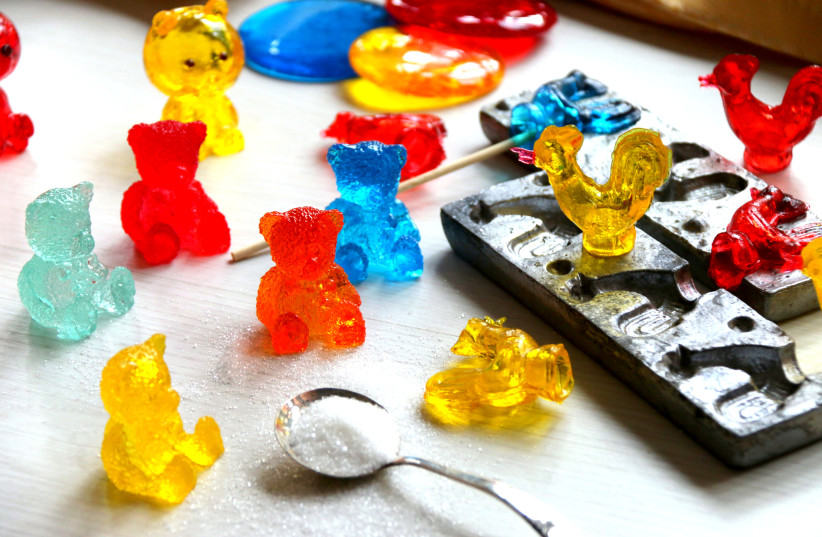Next week is Tu Bishvat, the holiday that celebrates the new year for the trees in the Land of Israel as the almond trees begin to blossom. It’s also a time when we traditionally eat fruit, both fresh and dried.
Immediately following Tu Bishvat, on the Thursday before we read the Yitro Torah portion, is a special day Tunisian Jews celebrate called the Festival of Sons. We take this holiday very seriously in my family, especially since I am the mother of four sons.
There are three origins for this holiday. The first is that this is the week the Ten Commandments are read in the synagogue, and it is around this time of year that young children have mastered reading. A second is that in the 18th century, many Jewish boys in Tunisia were dying from a mysterious plague, but the sick were healed after eating pigeon soup during the week that this Torah portion was read. Stuffed pigeon, therefore, is one of the traditional foods served on the Festival of Sons.
A third version is that the festival commemorates the meal that is mentioned in the Torah portion in which Aaron and the elders of Israel ate with Moses’ father-in-law, Yitro.
As the festive meal is for the children, it is almost like a doll’s party. Everything is served on small plates and in mini cups. There are mini challot, as well as lots of candy and marzipan in the shapes of children and animals. The second part of the festive meal includes meat dishes.

Below, I am bringing you two recipes for cookies that are made especially for the Festival of Sons and are perfect for serving on Tu Bishvat. The first one is Florentine cookies, which are thin, crisp, delicate cookies that are named for the city of Florence in Italy. They are jam-packed with dried fruits and nuts, and honey bonds all these incredible ingredients together. The second recipe is for strawberry marmalade squares.
Florentine Cookies
Use a 25cm x 25cm pan.
Dough:
- 1 ½ cups (210 gr.) flour, sifted
- 120 gr. butter
- 3 Tbsp. powdered sugar
- 1 Tbsp. brown or demerara sugar
- 1 tsp. vanilla
- 3-4 Tbsp. (45-60 ml.) sweet cream
Top layer:
- ¾ container (180 ml.) sweet cream
- ½ cup (100 gr.) white sugar
- 2 packets vanilla sugar
- 80 gr. glucose syrup (or corn syrup)
- 30 gr. butter
- ¾ cup slivered or sliced almonds
- 1 cup dried fruit (apricots, light raisins, cranberries, prunes, dates)
- ¾ cup nuts (hazelnuts, pecans, walnuts, pistachios)
To prepare the dough: Place all the dough ingredients in the bowl of a food processor, except for the sweet cream. Press on the pulse button two or three times until the mixture is crumbly. Add 1 tablespoon of sweet cream at a time, blending it in between each mix. Mix using pulses until the sweet cream is mixed in well. If the dough is too dry, add a little more sweet cream.
Line a baking sheet with baking paper. Transfer the dough onto the pan and flatten it with your hands and a small rolling pin. Make sure that there is one or two centimeters between the top of the dough and the edge of the pan.
Prick the dough with the tines of a fork, then cover the dough and place it in the freezer for 30 to 60 minutes. Take the dough out of the freezer, and bake in an oven that has been preheated to 180° for 12 to 15 minutes until it turns lightly golden but has not finished baking. Remove from the oven.
To prepare the top layer: Place the sweet cream, sugar, vanilla sugar, glucose syrup, and butter in a pot, and heat over medium heat, stirring continuously until it reaches a boiling point. Add the almonds, dried fruits, and nuts, and stir for another minute over low heat. Pour over the dough and flatten.
Bake in an oven that has been heated to 180° for 20 minutes until the top layer has slightly browned. Let cool completely. Remove from the pan by holding on to the corners of the baking paper, and place it on your work surface. Cut into squares. Store in an airtight container.
- Level of difficulty: Medium
- Time: 1 hour
- Status: Dairy
Strawberry Marmalade Squares
Store in a ½ kilogram jar.
- 400 gr. strawberry or other fruit spread
- 400 gr. sugar
- 20 gr. pectin (can be purchased at a baking supply shop)
- 90 gr. glucose (can be purchased at a baking supply shop)
- Juice from ½ lemon
Topping:
- 1 cup sugar
Place the strawberry spread in a pot and heat over medium heat.
Pour 100 gr. of sugar into a bowl, then add the pectin and stir well. Pour this mixture into the pot, and stir. Then, add the rest of the sugar while stirring. Continue cooking the strawberry mixture while stirring until it reaches 70° (use a food thermometer to measure).
With wet hands, add the glucose and stir well. Continue cooking the strawberry mixture while stirring until it reaches 100°, then add the lemon juice and stir.
When the marmalade reaches the desired consistency, remove it from the flame. It should reach 104° or 105°.
Cover a 27 cm. x 30 cm. baking sheet with baking paper, and the marmalade on it. Flatten the marmalade so that it is ½ cm high. Let it cool for 3 hours, then cut into cubes or whatever shape you desire.
Add a cup of sugar to a bowl, then roll the marmalade squares in it.
Store in a dry place in a container lined with baking paper.
- Level of difficulty: Medium
- Time: 4 hours, including cooling time
- Status: Parve
Translated by Hannah Hochner.
